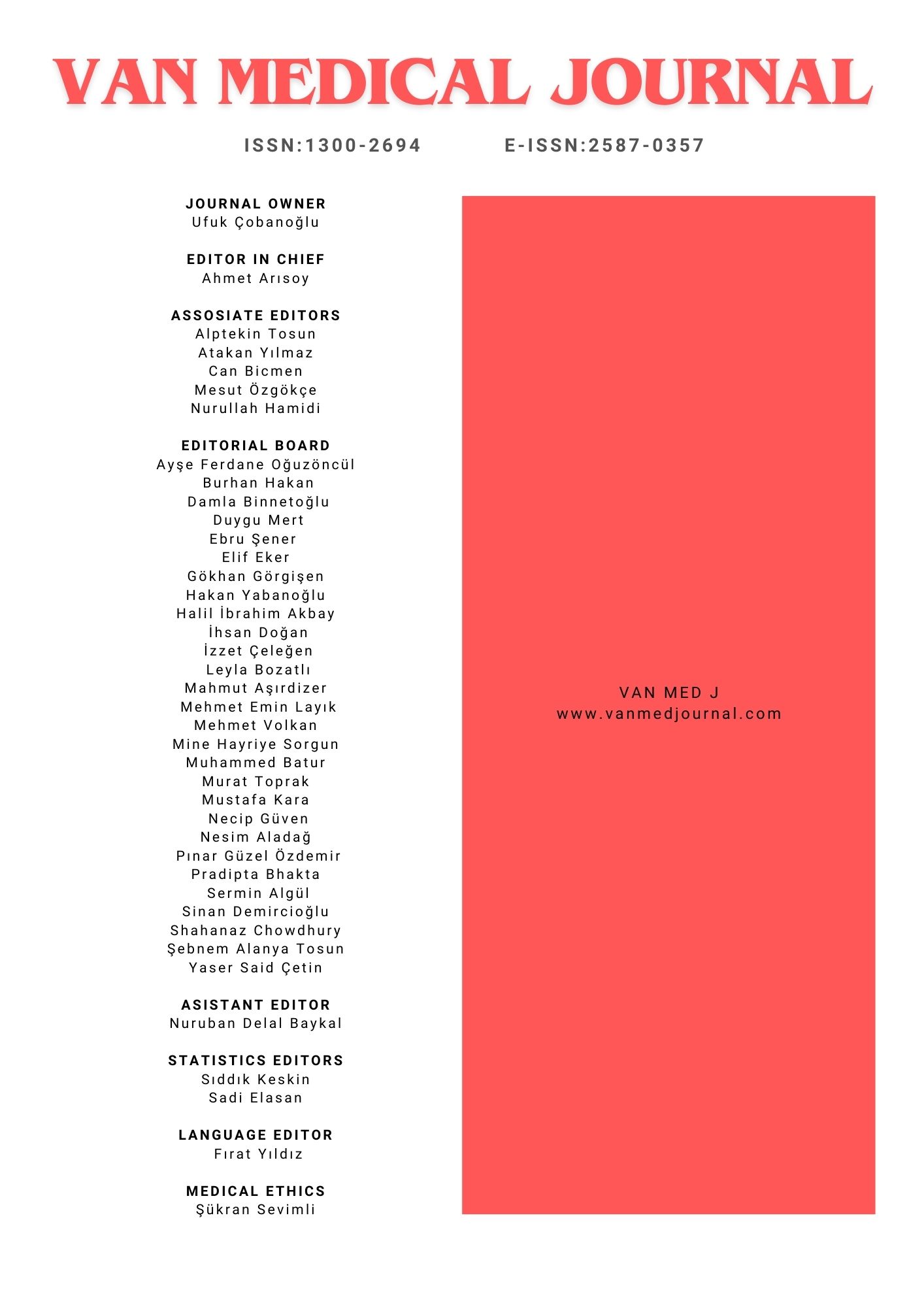Retrospective Analysis of 90 Patients that Underwent Retrograde Intrarenal Surgery
Ali Çift, Can BenliogluAdiyaman University, Faculty Of Medicine, Department Of Urology, Adiyaman,INTRODUCTION: To evaluate the results of retrograde intrarenal surgery (RIRC) performed in our clinic in cases with renal stones.
METHODS: The results of 90 patients that underwent RIRC between June 2016 and January 2019 were evaluated retrospectively. The demographic data and the preoperative and postoperative clinical characteristics of the patients were examined.
RESULTS: The mean age of 90 patients that underwent RIRC (41 men/49 women) was 43.35 (21-84) years, and the mean stone size was 16.22 (10-28) mm. The operation was performed under general anesthesia in 38 patients (42.22%) and spinal anesthesia in 52 (57.78%). The mean operation duration was 61.76 (30-115) min, and the mean stone fragmentation time was 48.33 (15-95) min. In 23 patients (25.55%), a double-J stent was inserted into the ureter since the kidney could not be reached due to stenosis. In 75 patients (83.33%), a double-J stent was placed at the end of the operation. The mean hospital stay was 1.08 (1-3) days. The stone-free rate was 71.12%. Of the cases with residual stones, 21 (23.32%) underwent an additional intervention and five (5.55%) were followed up without further intervention. Complications were observed in 13 patients (14.44%) and evaluated according to the modified Clavien classification.
DISCUSSION AND CONCLUSION: In the presence of adequate equipment and experience, RIRC is an effective and safe procedure with high success, low complication and minimal morbidity rates in the treatment of renal stones.
Retrograd İntrarenal Cerrahi Uygulanan 90 Hastanın Retrospektif Analizi
Ali Çift, Can BenliogluAdıyaman Üniversitesi Tıp Fakültesi Üroloji Anabilim DalıGİRİŞ ve AMAÇ: Kliniğimizde böbrek taşı tedavisinde minimal invaziv tedavi olan retrograd intrarenal cerrahi (RİRC) uygulanan olguların sonuçlarını değerlendirmek.
YÖNTEM ve GEREÇLER: Haziran 2016 - Ocak 2019 tarihleri arasında kliniğimizde RİRC yapılan 90 hastanın sonuçları retrospektif olarak değerlendirildi. Hastaların demografik verileri, operasyon öncesi ve sonrası klinik özellikleri incelendi.
BULGULAR: RİRC uygulanan toplam 90 hastanın (41erkek/49 kadın) ortalama yaşı 43,35 (21-84) yıl, ortalama taş boyutu 16.22 (10-28) mm idi. Operasyon hastaların 38’inde (% 42,22) genel anestezi, 52’sinde (%57,78) spinal anestezi altında uygulandı. Operasyon süresi ortalama 61.76 (30-115) dk, taş parçalanma süresi ortalama 48.33(15-95) dk idi. Hastaların 23’ünde (%25,55) darlık nedeniyle böbreğe ulaşım sağlanamadığından üretere double J stent yerleştirildi. 75 hastaya (%83,33) operasyon sonunda üretere double J stent yerleştirildi. Hastanede kalış süresi ortalama 1.08 (1-3) gün idi. Taşsızlık oranı %71,12 idi. Rezidü taşı kalan hastaların 21’ine (%23,32) ek girişim uygulandı, 5’ine (%5,55) ek girişim uygulanmadan takip edildi. Modifiye Clavien sınıflamasına göre 13 hastada (%14,44) komplikasyon izlendi.
TARTIŞMA ve SONUÇ: RİRC işlemi yeterli donanım ve deneyim varlığında, böbrek taşlarının tedavisinde komplikasyon oranı düşük, başarı oranı yüksek minimal invaziv bir tedavi yöntemidir.
Corresponding Author: Ali Çift, Türkiye
Manuscript Language: English

